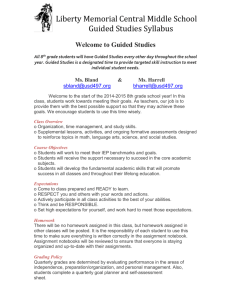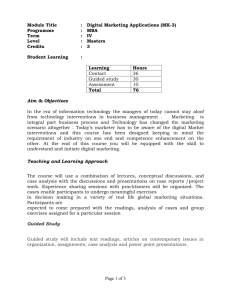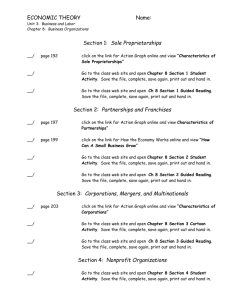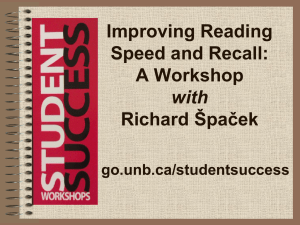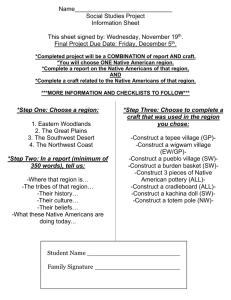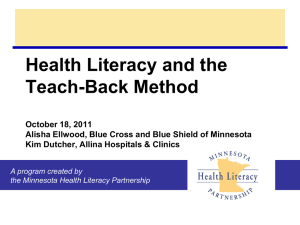Lesson Plan Template Sample 4
advertisement
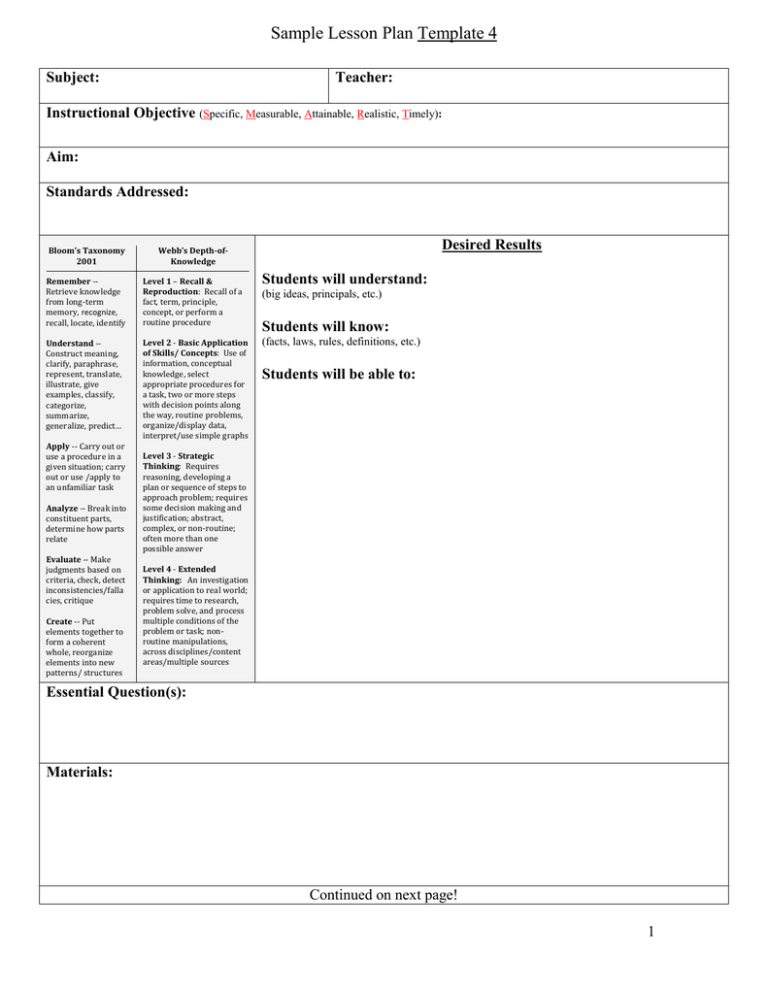
Sample Lesson Plan Template 4 Subject: Teacher: Instructional Objective (Specific, Measurable, Attainable, Realistic, Timely): Aim: Standards Addressed: Desired Results Bloom’s Taxonomy 2001 Webb’s Depth-ofKnowledge Remember -Retrieve knowledge from long-term memory, recognize, recall, locate, identify Level 1 – Recall & Reproduction: Recall of a fact, term, principle, concept, or perform a routine procedure Students will understand: Understand -Construct meaning, clarify, paraphrase, represent, translate, illustrate, give examples, classify, categorize, summarize, generalize, predict… Level 2 - Basic Application of Skills/ Concepts: Use of information, conceptual knowledge, select appropriate procedures for a task, two or more steps with decision points along the way, routine problems, organize/display data, interpret/use simple graphs (facts, laws, rules, definitions, etc.) Apply -- Carry out or use a procedure in a given situation; carry out or use /apply to an unfamiliar task Analyze -- Break into constituent parts, determine how parts relate Evaluate -- Make judgments based on criteria, check, detect inconsistencies/falla cies, critique Create -- Put elements together to form a coherent whole, reorganize elements into new patterns/ structures (big ideas, principals, etc.) Students will know: Students will be able to: Level 3 - Strategic Thinking: Requires reasoning, developing a plan or sequence of steps to approach problem; requires some decision making and justification; abstract, complex, or non-routine; often more than one possible answer Level 4 - Extended Thinking: An investigation or application to real world; requires time to research, problem solve, and process multiple conditions of the problem or task; nonroutine manipulations, across disciplines/content areas/multiple sources Essential Question(s): Materials: Continued on next page! 1 Sample Lesson Plan Template 4 Assessment Options KWL Organizers Likkert Scale Exit Cards Conferencing Quizzes Surveys Observations Quick Writes Essay (with Rubric) Frayer Model Map Homework Multi-Media Presentations Hand/Card Signals Problem Solving Differentiation Strategies Assessment During the Lesson: (Describe how you will check for understanding several times throughout the lesson.) Differentiation: Differentiation Plan: Anchor activities , Flexible grouping, Tiered Instruction Interest-based investigations, Learning Centers, Learning Contracts, Personal Agendas, Choice Boards Graphic Organizers, Adjusted Questions, Compacted Curriculum, Building a RAFT I plan to differentiate for… □ Readiness Level □ Student Interest □ Learning Style By differentiating the… □ Content □ Product □ Process Differentiated Groups or Individuals: Strategies Lesson Outline: (00:00-00:00) Auditory Believer/Doubter Fishbowl Four-Corners Debate Literature Circles Roundtables Socratic Seminars Teach-Back Think-Pair-Share Read-Aloud Think-Aloud Visual Guided Note Taking Flowcharts Double-Entry Notebooks Sequencing Maps Concept Maps Venn Diagrams Foldables Dioramas Mobiles Graphing Kinesthetic Gallery Walks Readers Theater Investigations Games Floor/Wall Puzzles Do Now: (00:00) Transition to Mini-Lesson: (00:00) Mini- Lesson Instruction: (00:00) Transition to Guided Practice (00:00) Guided Practice: (00:00) Transition to Independent Practice: (00:00) Independent Practice (00:00) Transition to Share Out: (00:00) Share Out (00:00) Lesson Summary/Exit Ticket (00:00) 2

